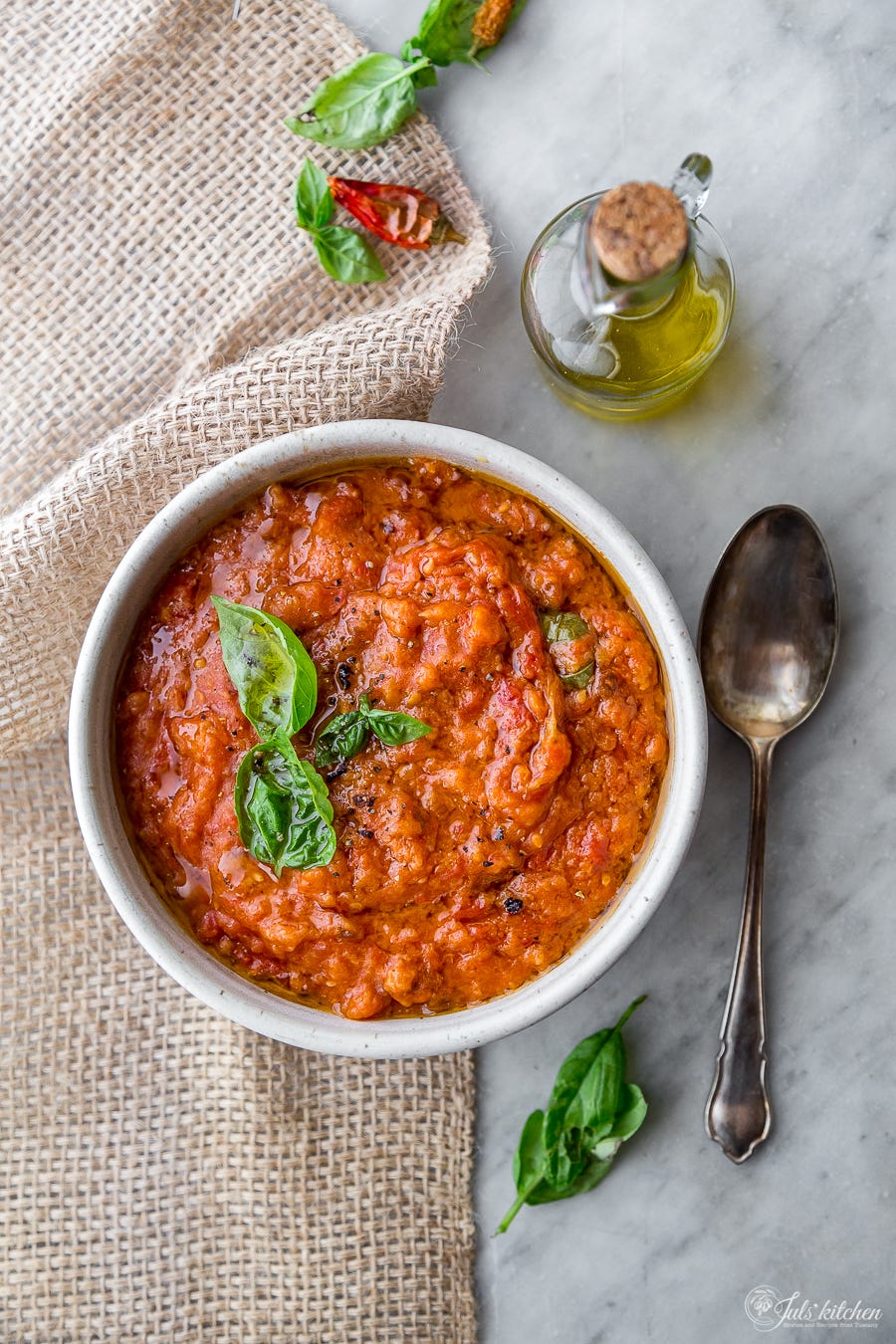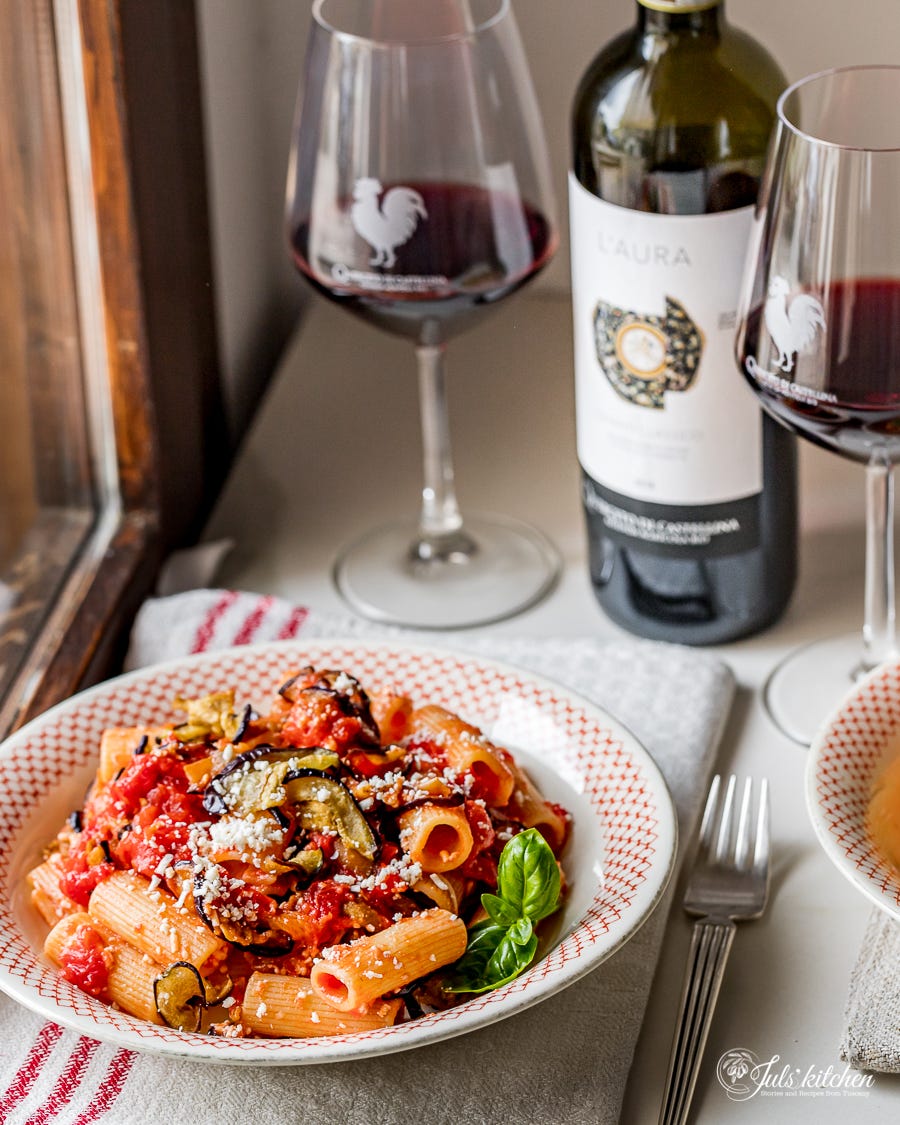Weekend cooking project. Panzanella
In my family, we make the classic panzanella, without exception. But then friends arrive, each wanting a different version.
Panzanella is made in layers.
The base ingredient is unsalted Tuscan bread that has gone stale by a few days, which is then soaked in water, wrung out and combined with tomato, cucumber, onion, oil, salt, red wine vinegar and basil. As often happens, however, every cook ends up creating a version wholly theirs, by adding or leaving out ingredients according to individual preference.
The recipe for panzanella on the blog dates back to the very first year of blogging. It needed a make-over, a proper introduction, and new photos. So here we are, with a weekend cooking project that represents the quintessential Tuscan summer cooking.
My recipe for panzanella
In my family, we make the classic panzanella, without exception. But then friends arrive, each wanting a different version. Some want a panzanella without onion. Others prefer it without cucumber. Then there are those who, like Tommaso, love it with tuna and capers. Panzanella is one of those dishes that invariably bend to the mood of the day and what’s on hand in the garden or pantry.
The best bread to make panzanella is Tuscan bread. On the blog, you can find a recipe to make your own Tuscan bread loaf with sourdough. If you don’t feel like baking it, a good crusty country bread would do.
Find the recipe for the panzanella on the blog.
If you decide to take part in the weekend cooking project, share the results with us on social media by using the hashtag #myseasonaltable and tagging @julskitchen on Instagram. It will be a way to shorten the distance in this time of social distancing.
If you have questions about the ingredients or the recipe, if you have a special request for one of the next cooking projects, or if you just want to have a chat, just reply to this email.
If you like Letters from Tuscany, please consider sharing it with your friends and family or on Social Media. It will help us grow! Thank you! xx
More recipes with stale bread from the blog archive
Pappa al pomodoro. Cooking class after class, summer after summer, I came to my own version, which sits right in the middle in between Florence and Siena, just like me, just like the Val d’Elsa. My biggest success was when Grandma tasted it and affirmed that my pappa was her favourite one.
Acquacotta. The first time I heard this folk tale, it immediately reminded me of the acquacotta, literally the cooked water, a typical soup of Maremma, a Tuscan area that was once very poor. It is another good example of peasant cooking along with many other recipes that have as main ingredients stale bread and some seasonal vegetables. It is a nomad dish that followed the people from the mountain Amiata who moved in winter to the plain of Maremma in search of work, bringing with them a few ingredients, among which there were always onions. The basic ingredients of acquacotta are water, bread and onions.
Bread pudding cake. While you make it, you’ll already have an idea of what the result will be: the hot milk softens the dry bread and makes it the perfect start for a rustic and moist cake, which will be enriched with two tablespoons of cocoa powder, nuts, an egg and some sugar. From here on, add your imagination: think of fresh raspberries in summer or a handful of chocolate chips if you want to indulge yourself… delicious!
Want more original recipes?
So you should consider subscribing. If you join the subscription-based weekly newsletter every Monday you’ll receive an email with a new recipe.
What you missed this month: pasta alla norma, wild fennel pesto tagliolini with shrimps, two recipes for an Italian aperitivo, and torta salata with zucchini and ricotta.
If you join us, you will receive a new original recipe inspired by ingredients, season, or tradition every week. You will discover Italian classics, weeknight ideas with an Italian flair, reliable dishes to add to your cooking repertoire.
Subscribing to the newsletter, you will support us directly. Whenever you decide to join us, you will have complete access to the whole archive of already published recipes and stories.
We love Letters From Tuscany as it is like having our own independent publication: we test, photograph, write each recipe just for you. It is a way of sharing great content, recipes that we like, created to inspire you, to bring a little taste of Italy to your kitchen, for you and your family.
June and Querceto di Castellina
As we announced in a previous newsletter, June will be dedicated to Italian recipes paired with the wines of our friends at Querceto di Castellina. We’ve visited their organic agriturismo and winery often during the past years, for candle-lit vineyard dinners, summer lunches, and Thanksgiving parties.
We’ll be sharing their recipes in our Monday newsletter.
If you subscribe to the Querceto newsletter, you will receive a 10% discount on your first online order. You will also be kept in the loop on all of the news and offers coming from Querceto di Castellina.
They also created a special offer for you!
A 6 bottle box with: 1 Igt Toscana Rosé Furtivo 2020, 1 Igt Toscana Bianco Livia 2019, 2 Chianti Classico DOCG L’aura 2018, 2 Chianti Classico DOCG Gran Selezione Sei 2017. The cost is 135€ instead of 150€ (shipping non included) + you will have the chance to enjoy a special 45 minute zoom tasting with Mary and Jacopo from Il Querceto.
Contact Mary at wineorders@querceto.com to purchase this special box, requesting for the Juls’ Kitchen special box.
Join our virtual cooking classes
We are missing the people we used to meet during our market tours and cooking classes. We had to figure out a new way to share our passion for food, to virtually meet all the food enthusiasts who gave us so much through the years. This is why we launched a virtual Tuscan cooking class on Udemy, an online learning platform.
We’ve been working on new courses and videos. Read more about the courses here on the blog to stay updated.
Virtual cooking courses currently available:
Each course includes:
step-by-step cooking demonstrations,
a PDF with ingredients, tools, and instructions of each recipe,
lifetime access,
free access to upcoming new recipes.






